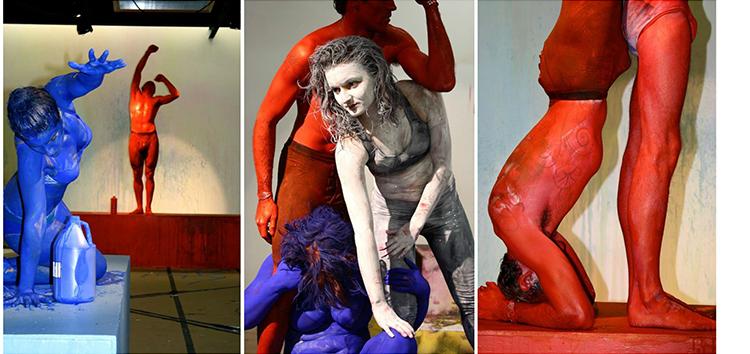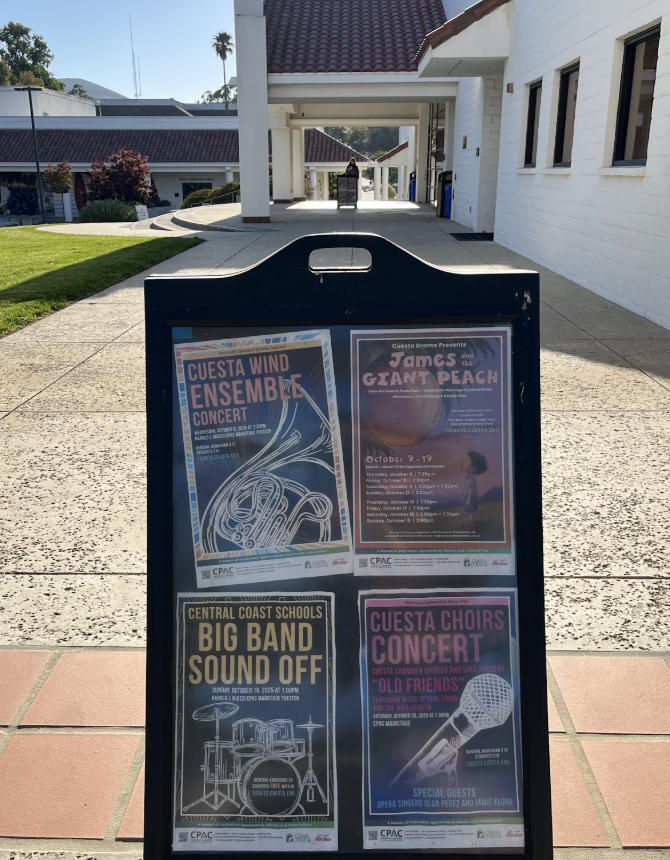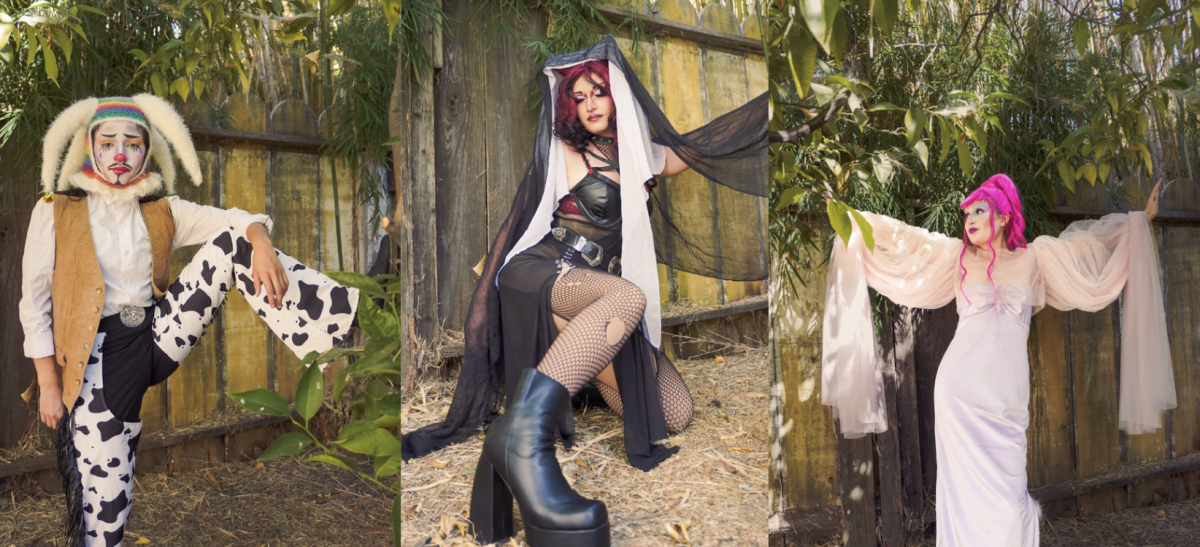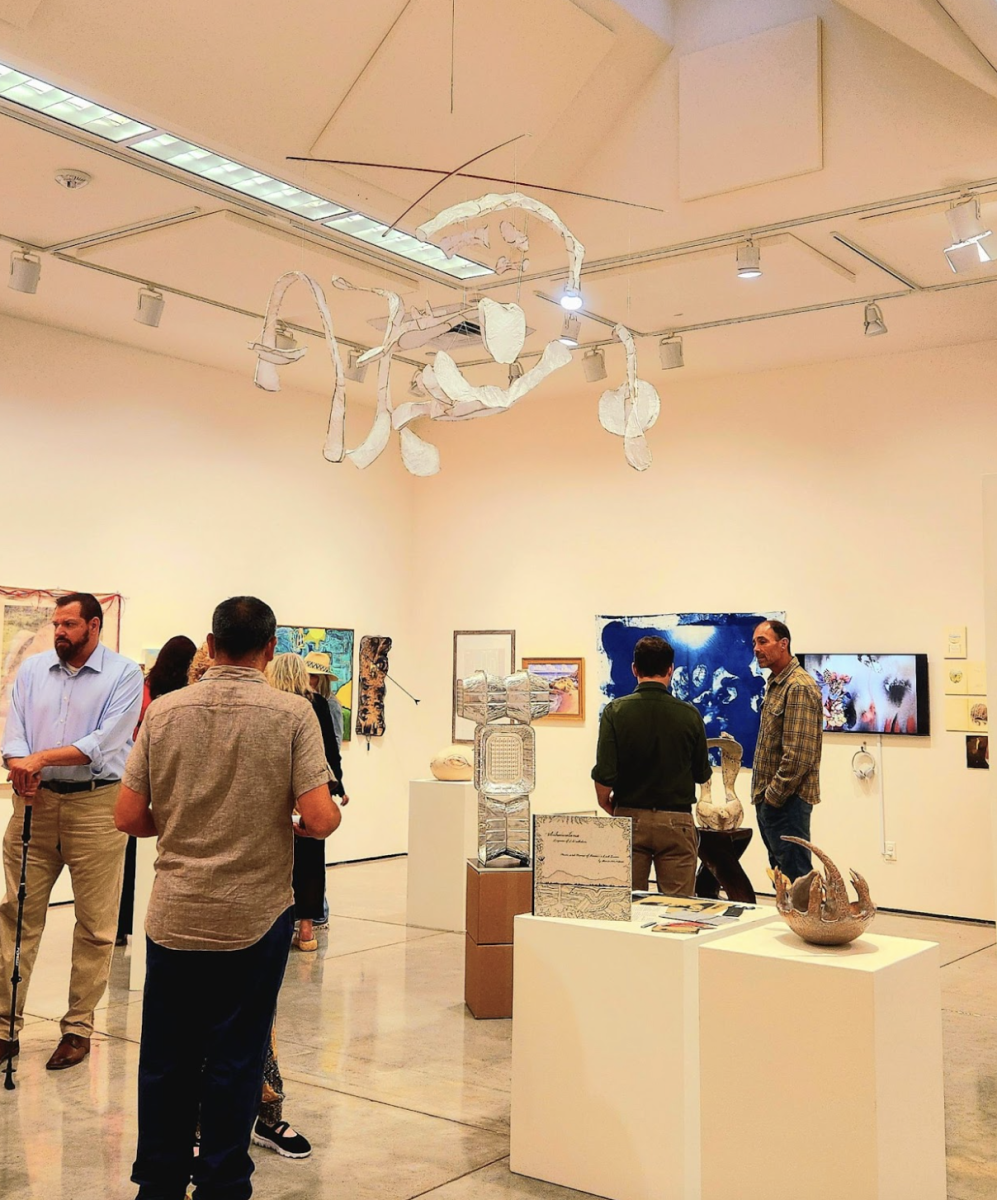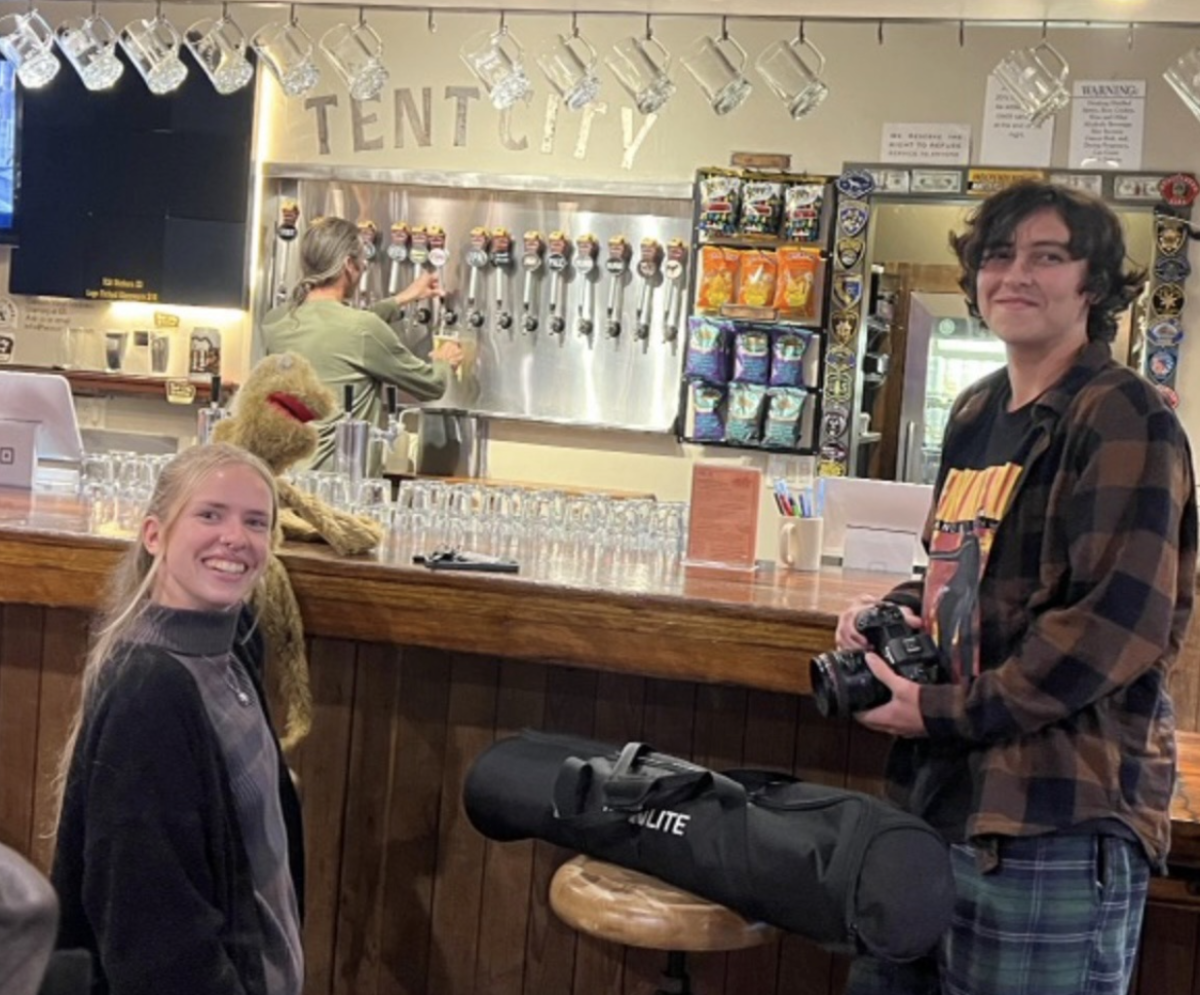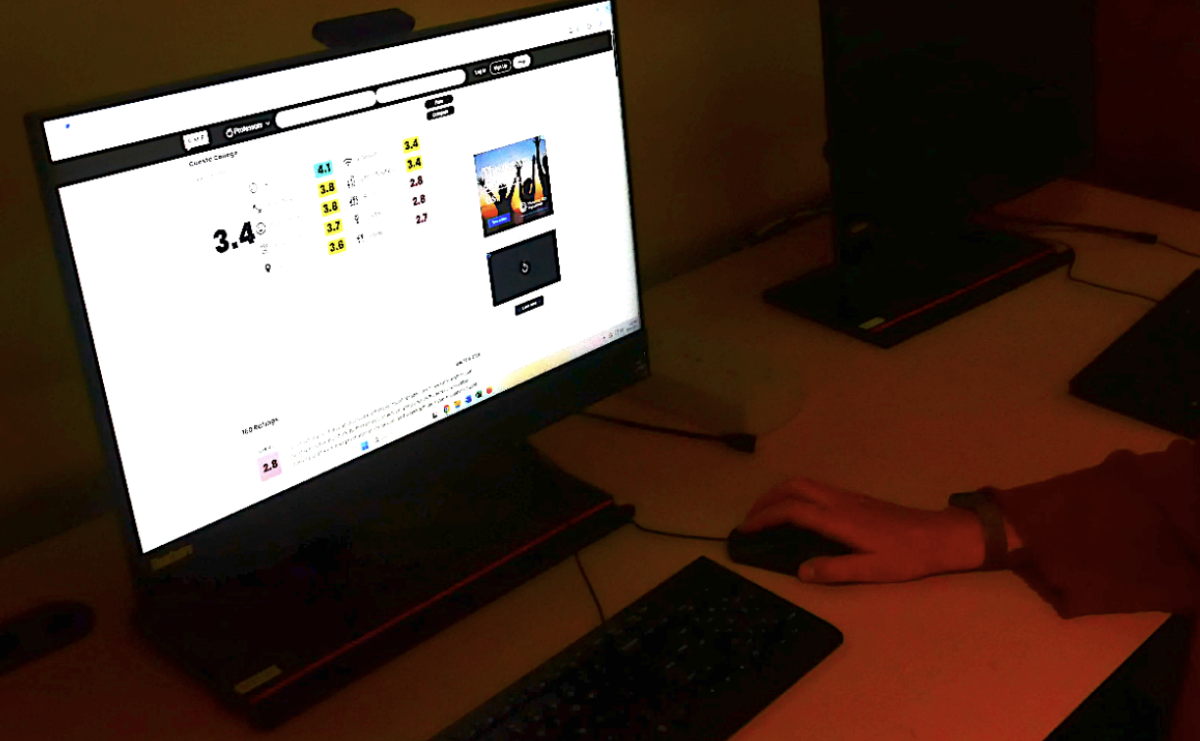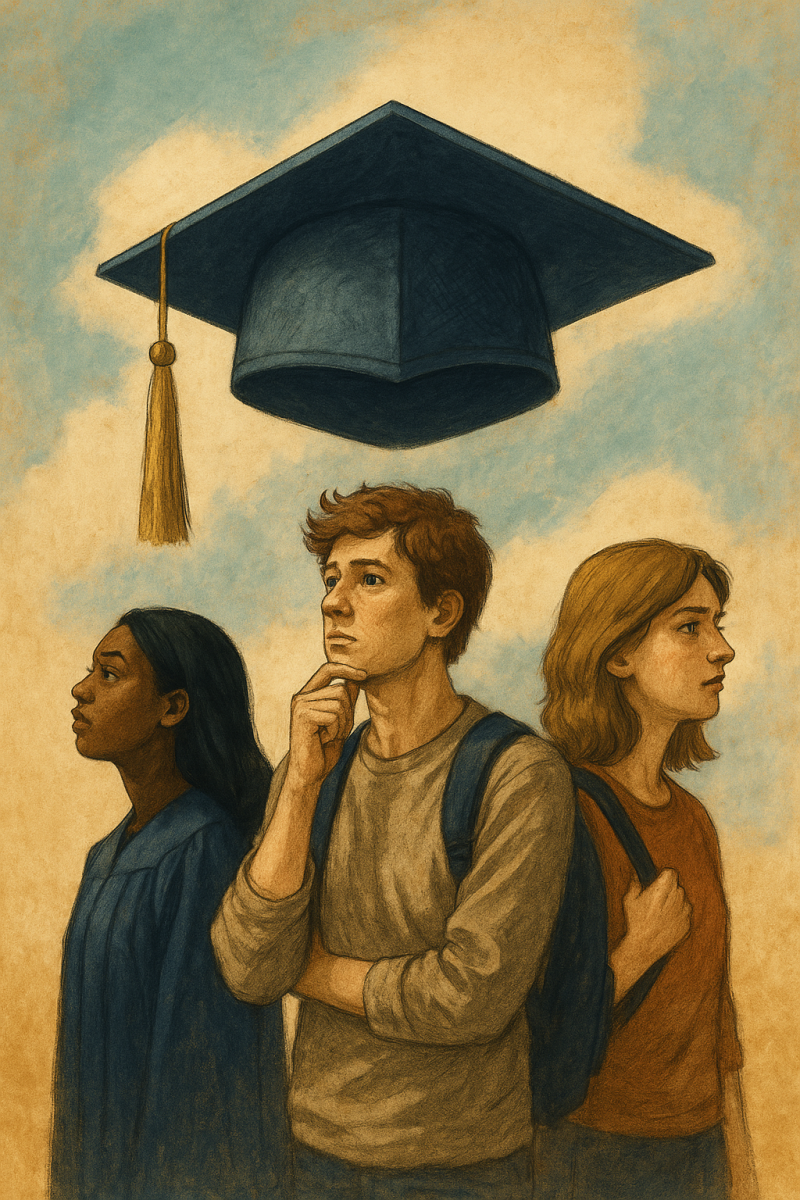Oliver Herring, who is known for his abstract art through improvisation, sets up his gallery in the Harold J. Miossi gallery.
Photos by Oliver Herring
By Conor Ney
A&E Editor
Clashing colors of food dye drip down the face of his subject, artist Oliver Herring has instructed him to spit the dye out of his mouth against a harsh wind, the dye blowing directly back into his face. Herring is crouched with his camera, capturing candid shots.
They’ve been at it for hours, only stopping when the model, who Herring had met spontaneously the night before, started showing hypothermic symptoms, or rather, a little bit after he started showing hypothermic symptoms.
This is the moment Herring’s been waiting for, where he believes the best pictures will come from: the point of complete and total exhaustion, when boundaries and defenses have evaporated.
“When you’ve reached that point of exhaustion, you don’t know how to react,†Herring said. “Which means you’re tapping into something very true.â€
Herring is currently conducting a residency at the Miossi Art Gallery, coopting the space as his studio until Dec. 7.
Herring’s art has undergone many transitions and rebirths spanning across mediums and forms, from knitting Mylar to sculpting photos, from spitting food dye to interactive performance art. Through all the iterations of his work, one constant remains — a fascination with the idiosyncrasies of the individual.
This captivation with the unique, with those who unabashedly embrace their differentness, has been fundamental to Herring from the beginning.
While a student studying art at Oxford, Herring came across the legendary drag performance artist/director Ethyl Eichelberger who was performing a one-man rendition of “King Lear.†He was enthralled by the playfulness and imagination, so much so that he went back to see the show again the next night.
The show, ostensibly the same one as the night before, was radically different.
Eichelberger had abandoned the script, the direction completely improvised dependent upon the people in the room.
“I saw him invest in something ephemeral, and abandon all safety structures in order to connect with the audience,†Herring said.
In 1990 Eichelberg committed suicide after contracting AIDS. Herring had moved to New York by this time and was deeply moved by Eichelberger’s death. He began work on “A Flower for Ethyl Eichelberger,†the first of a series that served as a elegy and lasted a decade.
“I wanted to not let that death be just another death,†Herring said.
The pieces were knitwork of the silver reflective material Mylar, consisting of coats floating with an ethereal quality on shimmering beds or blankets, seemingly suspended in space and time.
For the better part of the 90’s this knitwork consumed Herring’s practice.
“10 years of knitting is hardcore. It reached an endpoint.†Herring said. “There was a sense of isolation, a loneliness in the studio.â€
After a decade of solitary confinement in the studio, Herring’s work took a radical turn. In 2002, he opened his studio up to anyone interested in working, the only condition being that they be willing to donate more than a few hours of their time.
“As soon as I had someone with me in the studio, it was like the floodgates opened,†Herring said.
The first works to come out of this open invitation were a series of videos which sparked the inspiration for Herring’s creation of Task Parties. The idea is straightforward enough, ambitious in its aims, but brilliant in its simplicity: a group of people congregate and write creative ‘tasks’ on paper, put them in a bucket, pull them out at random and interpret the tasks.
The idea has taken on a life of it’s own, Task Parties spreading across the world in a viral fashion, with many who organize the events not even aware of Herring’s role as inventor of the concept.
For those who participate, the experience is often cathartic, Herring says. They’ve been performed in educational and community settings across the country, with profound results.
“I believe that we all have more talents than we have the opportunity to express,†Herring said. “I’m trying to find an outlet for you to express.â€
During his residency at Cuesta, Herring has come with no expectations, the work he creates here will be entirely dependent on the personalities, bodies, and comfort zones of those who seek out the experience of working with him.
“I’m interested in what resonates with me in a way that challenges me,†Herring said. “The thing that surprises me the most is the thing I focus on the most.â€



